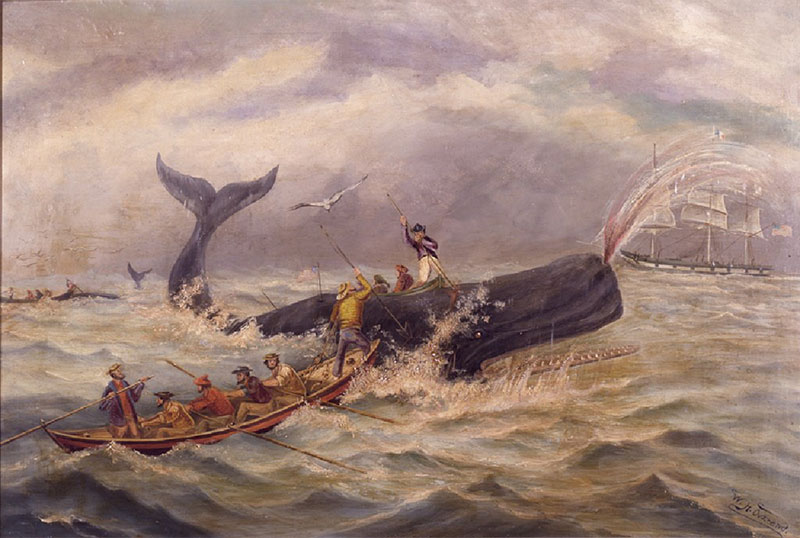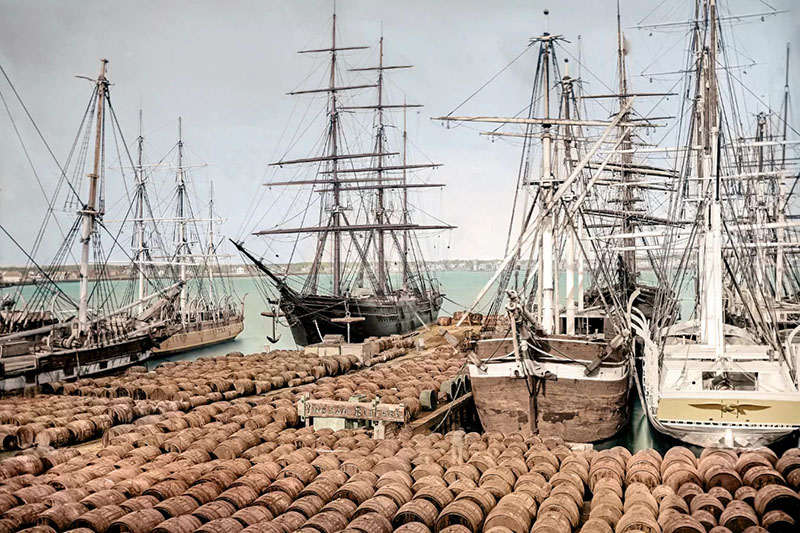2022 ROV and Mapping Shakedown
February 23 - March 3, 2022
Setting the Stage for Discovery: Whaling in the Gulf of Mexico
On February 25, 2022, NOAA Ocean Exploration and partners from SEARCH Inc. and the Bureau of Ocean Energy Management discovered the remains of what is likely the brig Industry. The article below describes the whaling industry in the Gulf of Mexico around the time that Industry would have operated there.

Whaling was America’s first global industry, spanning prerevolutionary times through the start of the 20th century. Whale oil lit the street lamps in American cities, and whale baleen supported women’s 19th century hooped skirts. Whaling and the true-life tale of the wreck of the whaler Essex inspired the American classic Moby Dick, and island whaling communities like Nantucket, Massachusetts, became known throughout the world.
Whalers took the American flag into the South Atlantic, the Pacific, and the Arctic. Less known is the story of whaling off America’s own shores, especially in the Gulf of Mexico. Recent research by historians suggests that as many as 204 whalers worked in the Gulf from 1788 to 1878. During the years 1841-1845, the economic heyday of American whaling, the U.S. whaling fleet consisted of 672 ships in total.
Whalers regularly hunted in the Gulf of Mexico, entering its waters for short periods after hunting off the Azores, Cape Verde, Africa, and South America. The Gulf was an easy stop on the clockwise circuit around the Atlantic before returning to port.
Whalers hunted, killed, and processed an estimated 1,070 sperm whales in the Gulf of Mexico, many of them smaller whales. They also hunted blackfish or “pilot whales” and dolphins, killing and processing four hundred of these animals and adding them to their oil stores.

Aggressive hunting in the Gulf from the1840s up to the Civil War devastated whale populations in the Gulf, and after the war, Americans shifted their whale-hunting interests to the Arctic.
The small schooner Union, whaling in the Gulf in 1876, had no luck, while the schooner Amelia had but one successful strike and rendering of a whale in the Gulf in 1877. Nevertheless, for the most part, by this time, whaling in the Gulf had come to an end.
In October 1887, the captain of the steamship Joseph Oteri reported that he had encountered “a large school of whales” 150 miles off the mouth of the Mississippi River. An account of the sighting in the New Orleans Times-Picayune stated “that there should be whales in the Gulf of Mexico is not all surprising, but that a large number should be seen there would seem to show that this sea is again becoming a feeding ground for these animals. There was a time when they were found… in great numbers, but they were hunted so actively by the New England whalers that they were almost entirely driven from our waters.”
Related Links
- Proving a Discovery: The Case for Industry
- Industry’s Place in U.S. History: The Maritime Legacy of African-American and Indigenous Peoples
- NOAA, Partners Discover Wreck of 207-Year-Old Whaling Ship in Gulf of Mexico
- Industry (BOEM Wreck Site 15563) Photogrammetry Model
Published March 23, 2022
Contributed by: James P. Delgado, SEARCH Inc.
Relevant Expedition: 2022 ROV and Mapping Shakedown